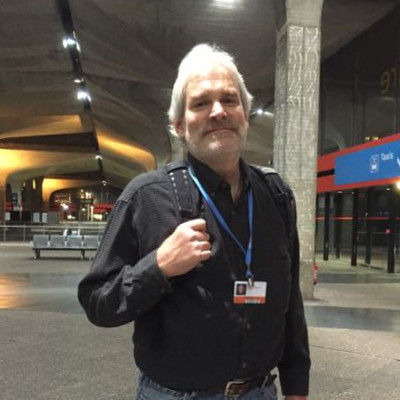
Keeping with its commitment of reaching 100 percent renewable energy by 2022, Salesforce has just announced its third and largest such purchase agreement to date. The 15-year virtual power purchase agreement (VPPA) will support 80 megawatts of wind energy from the Bright Stalk wind project in Mclean County, Illinois.
Once fully operational in 2019, Salesforce’s share of the 205 MW wind power installation will provide enough energy to power 27,000 homes annually. In total, Bright Stalk is expected to generate enough power to light 71,000 homes.
TriplePundit recently spoke with Patrick Flynn, VP of Sustainability at Salesforce, about this latest VPPA and the company’s vision for decarbonizing the global electricity supply.
We take it for granted, but delivering electrons to power society is enormously complicated, making decarbonization that much more daunting.
VPPA's, also known as “contracts for differences,” are a way for “a lot of companies to make progress towards their renewable energy goals, especially those that are doing it the impactful way,” says Flynn.
The “virtual” comes into play in that Salesforce “does not ever take physical delivery of that energy,” Flynn says, “nor do we have the burden of selling it ourselves into the grid.”
“That’s part of the reason they are an attractive option for us.” With the exception of one office in San Francisco “we don’t own any of our data centers or offices,” says Flynn. “We don’t actually pay utility bills directly all that often and we don’t have a direct demand for energy .”
Nonetheless, Salesforce influence demand “to make our energy come from renewable sources.”
Decarbonizing the electrical grid in a complex market
It’s nearly impossible for anyone to verify that every electron delivered to their business is generated from a renewable source. That’s simply not how the big picture of decarbonizing the electrical grid will ever work. But with vehicles like the VPPA agreement, companies like Salesforce can push forward toward its internal goals and the broader mission of cleaning up the grid.
The 15-year agreement allows Salesforce to purchase the power and receive the renewable energy credits at a fixed price. The project developer, in this case, EDP Renewables, sells the power into the wholesale market.
“We settle the differences between the fixed price and the market price, and that financial arrangement is what allows the become financed,” Flynn says.
“One of the very important things we look at in a renewable energy opportunity is the are we bringing new renewable energy to the grid - is it additional, materially impactful,” says Flynn.
“That idea of but for us, it might not have happened,” is a good way to think about additionality and the financial certainty we provide through the VPPA.
Strategizing impact
Emphasizing that “not all renewable energy credits are created equal,” Salesforce released its Green Energy Strategy white paper last week in tandem with the VPPA announcement.
The white paper lays out the three critical components essential for Salesforce as it works toward its clean energy target:
- Materiality/Additionality
With origins in the carbon offset market, “additionality” suggests a project passes a specific set of stringent tests relating to the carbon a project offsets. Even though used ubiquitously in the corporate REC sector, it confuses the differences between offsets and PPAs.
In the case of the offset market, the term refers to “carbon additionality,” a project that either avoids or reduces carbon.
On the other hand, “renewable additionality,” better referred to as impact or materiality, refers to a power purchase agreement that has a material impact on the construction and deployment of new renewable energy generation (not necessarily reduced carbon). As Flynn says, “but for us”, the Bright Stalk wind farm “might not have happened”.
Understanding this distinction brings us to the next strategic component.
- Reducing emissions
Building a new wind farm in California isn’t the same as building one in Illinois. Salesforce seeks projects that build out renewable energy capacity in the dirtiest energy markets. - Blazing a trail
As we are too often reminded, no one nation or corporation can, on its own, address a challenge as great as transforming the global energy economy. To think otherwise is hubris and a waste of time. Salesforce believes that bit by bit, through advocacy and collaboration, they can blaze a trail for others by learning from those who have gone before.
Certainly, the best efforts of one company aren’t nearly enough to accomplish the goal of decarbonization. That is no excuse to shy away from the challenge. Salesforce’s commitment to clean energy faces it head on and urges others to follow.
There is more to come.
Photo by Karsten Würth (@inf1783) on Unsplash

Tom is the founder, editor, and publisher of GlobalWarmingisReal.com and the TDS Environmental Media Network. He has been a contributor for Triple Pundit since 2007. Tom has also written for Slate, Earth911, the Pepsico Foundation, Cleantechnia, Planetsave, and many other sustainability-focused publications. He is a member of the Society of Environmental Journalists














